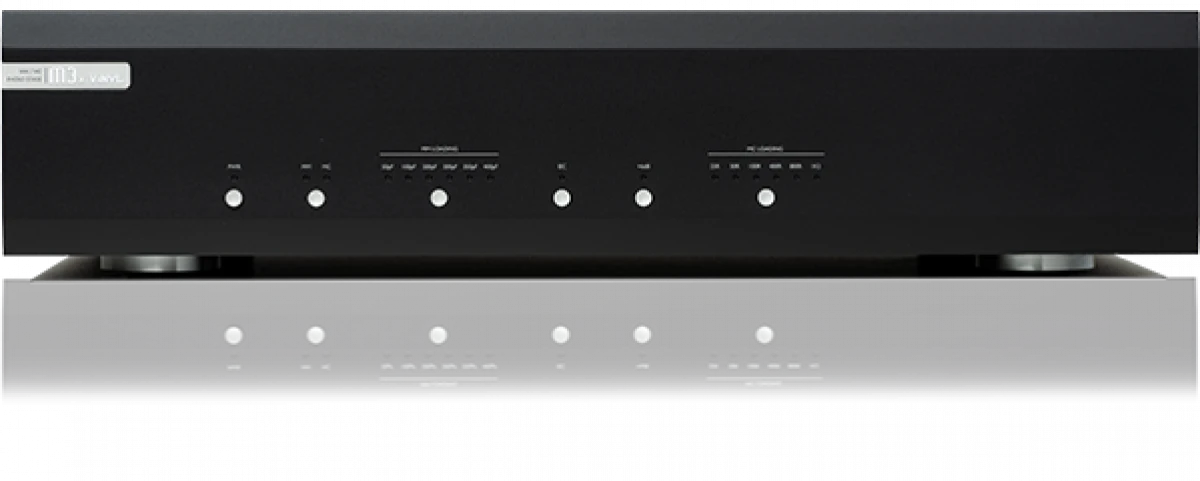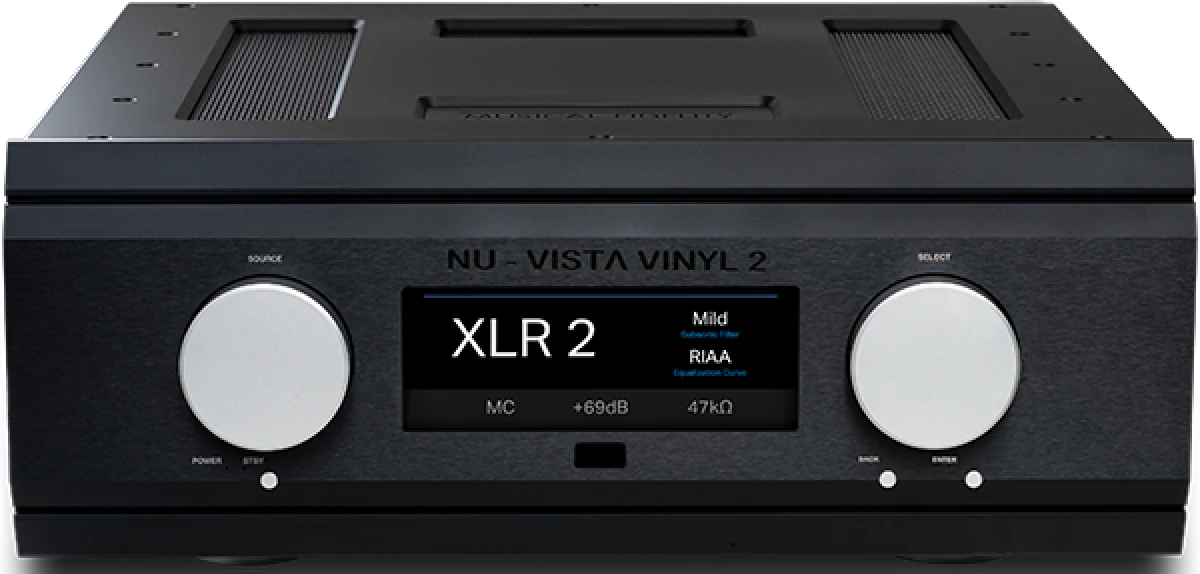Phonostages — Musical Fidelity M8x Vinyl
Description, images, technical data and specifications
Musical Fidelity M8x Vinyl
Image source — © Musical Fidelity
The Musical Fidelity M8x Vinyl is made in a fully balanced circuit with discrete components. It uses a printed circuit board three times larger, on which there are placed twice as many discrete components. The amplification path now has a three-stage design, offering more gain with significantly less noise. The phonopreamplifier level now varies from 40 to 69 dB, which is suitable for a variety of cartridges, providing the necessary flexibility even when mating with complex cartridges. Musical Fidelity M8x Vinyl supports DECCA and COLUMBIA equalization curves, along with the standard RIAA. A dual split-passive equalizer cascade and a two-stage subsonic filter further expand the capabilities of the new product.
Specifications
Model name
M8x Vinyl
Inputs (balanced)
2
Inputs (single-ended)
2
MC current-sensing input impedance (Ω)
N/A
MM/MC voltage input impedance (Ω)
5 ohm to 47 kohm selectable
Output impedance (Ω)
N/A
Gain (dB)
N/A
Playback EQ curves accuracy (dB)
N/A
Frequency response low +/- 3dB (Hz)
N/A
Frequency response high +/- 3dB (Hz)
N/A
Total Harmonic Distortion + Noise (%)
0.008
Dimensions (mm)
483 x 102 x 381
Weight (kg)
14
Official link
Related content
More components

Phonostages
Musical Fidelity MX-VYNL

Phonostages
Musical Fidelity M3X VINYL

Phonostages
Musical Fidelity M6X VINYL

Phonostages
Musical Fidelity NU-VISTA VINYL 2


